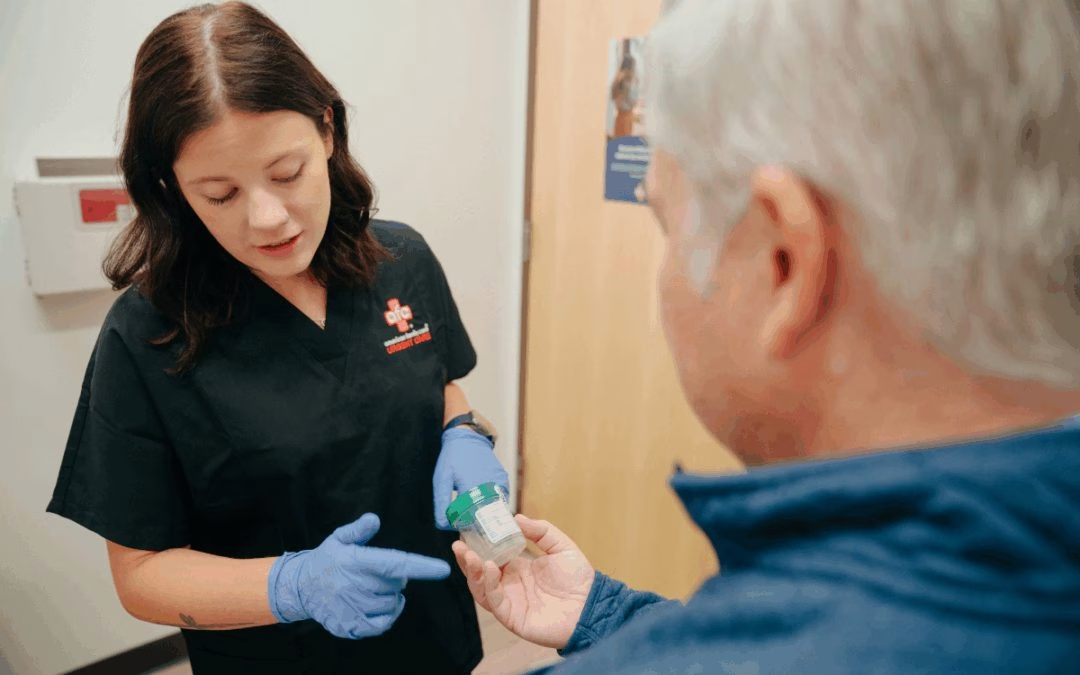by | Feb 23, 2024 | Healthy Living

Is Tanning a Good Treatment for Plaque Psoriasis?
If mountain climbing around the Table Rock area of North Carolina is your thing, there is no doubt that you get your fair share of sunlight as you scramble around, across the ridges and up the mountain walls. If you also happen to struggle with psoriasis, then you may have noticed that your symptoms improve to a degree when you are outside more, or you may have experienced an unpleasant sunburn that caused a flareup. During the cold months of winter that represent less than ideal climbing weather, you may have experienced a flareup and been tempted to see if using a tanning bed might alleviate your symptoms.
What is Psoriasis?
Psoriasis, a chronic autoimmune disease affecting millions worldwide, presents itself in various forms, with plaque psoriasis being the most common. Plaque psoriasis is characterized by red patches of skin covered with thickened, white, or silvery scale-like layers. This condition not only affects physical appearance but also contributes to systemic inflammation, potentially leading to other health complications like diabetes, heart disease, and even mental health issues. While there’s no cure for psoriasis, various treatments aim to manage symptoms and improve quality of life.
One treatment avenue that individuals explore, especially when seeking relief in winter, is tanning. But is tanning a viable option for managing plaque psoriasis?
Understanding Phototherapy
Light is a recognized form of psoriasis treatment, however, not all forms of light are equal in their effectiveness or safety. Phototherapy, or light therapy, is a recognized treatment for psoriasis. It involves exposing the skin to ultraviolet (UV) light, which can help control scaling and inflammation.
The type of light therapy one receives from a doctor is quite different from simply sitting in the sun and enjoying its rays, that one gets from a tanning bed session. Brief exposure to less intense sunlight before 10 AM and after 4 PM can be part of a psoriasis treatment plan.
Physician-supervised options include:
Artificial UVA (PUVA)
This treatment relies on the use of psoralens which are light-sensitizing agents that can be topical, mixed in bath water, or given orally. Patients must carefully monitor sunlight exposure and limit it according to their doctors’ orders.
Artificial UVB Light
Phototherapy
This form of light therapy can be combined with topical treatments to treat mild to moderate psoriasis. It is administered through small hand-held light units or full-body units that emit only UVB light.
Narrow Band Therapy
This may work better than phototherapy and takes fewer visits, though it may cause more severe and longer-lasting burns.
Excimer Laser (H4)
The laser is used for mild to moderate localized psoriasis plaques and helps control scaling and inflammation. The high-intensity beam is highly effective for the treatment of the scalp.
Sunlight vs. Tanning Beds
Sunlight is composed of ultraviolet (UV) light and is a form of radiation. It is primarily composed of light on the ‘A’ spectrum (UVA) which penetrates the skin deeply. Brief exposure to UVA light can help alleviate the symptoms of psoriasis but it is also the spectrum most associated with skin cancers. Light on the ’B’ spectrum (UVB) accounts for 5% of natural sunlight and it does not penetrate the skin as deeply as UVA rays. The UVB spectrum is most associated with burns and is the spectrum used by doctors in treating plaque psoriasis through special light-emitting devices. Exposure is limited to noticeably short periods.
Tanning beds emit both UVA and UVB light in similar proportions to natural sunlight. However, the risks associated with tanning beds are significant and must be carefully considered.
The U.S. Food and Drug Administration (FDA) reclassified tanning bed bulbs as a moderate risk due to their association with skin cancer. Dermatologists and healthcare professionals discourage excess UVA exposure due to its links to skin aging and cancer.
Risks of Tanning Bed Use
The light from sun tanning beds dehydrates the skin which causes UV rays to be reflected away from it. Sun tanning lotions applied before tanning function by keeping the skin hydrated and allowing UV rays to penetrate with greater efficiency. This unnaturally increases the skin’s absorption of the UV spectrums. The darkening of the skin that tanning causes is the skin’s mechanism to protect itself from further damage.
Hazards:
- Indoor tanning can increase your risk of developing the two most common types of skin cancer, squamous cell carcinoma by 58% and basal cell carcinoma by 24%.
- Using tanning beds before age 20 can increase your chances of developing melanoma by 47% with the risk increasing after each additional use according to the American Academy of Dermatologists.
- Women under 30 years old who tan indoors are six times more likely to develop melanoma.
- Tanning, inside or outside, ages your skin more quickly as wrinkles, age spots, and stretch marks become more visible.
- Loss of skin firmness can appear prematurely as can the leathery skin tanners develop.
- Eye damage including cataracts, ocular melanoma, and photokeratitis (snow blindness).
- Immune suppression
Additionally, psoriasis sufferers may also experience worsened symptoms after a tanning bed burn. While tanning beds may seem like a convenient option for managing psoriasis, their risks far outweigh any potential benefits. The World Health Organization has classified tanning beds as cancer-causing agents, emphasizing the importance of avoiding their use.
Collaborating closely with medical professionals, managing stress well, and maintaining a healthy lifestyle are crucial steps individuals can take toward managing psoriasis effectively and improving their overall well-being.
While we don’t treat psoriasis, we can evaluate and treat minor dermatological issues that may arise as spring begins. Visit AFC Urgent Care South Charlotte 7 days a week with no appointment necessary.


